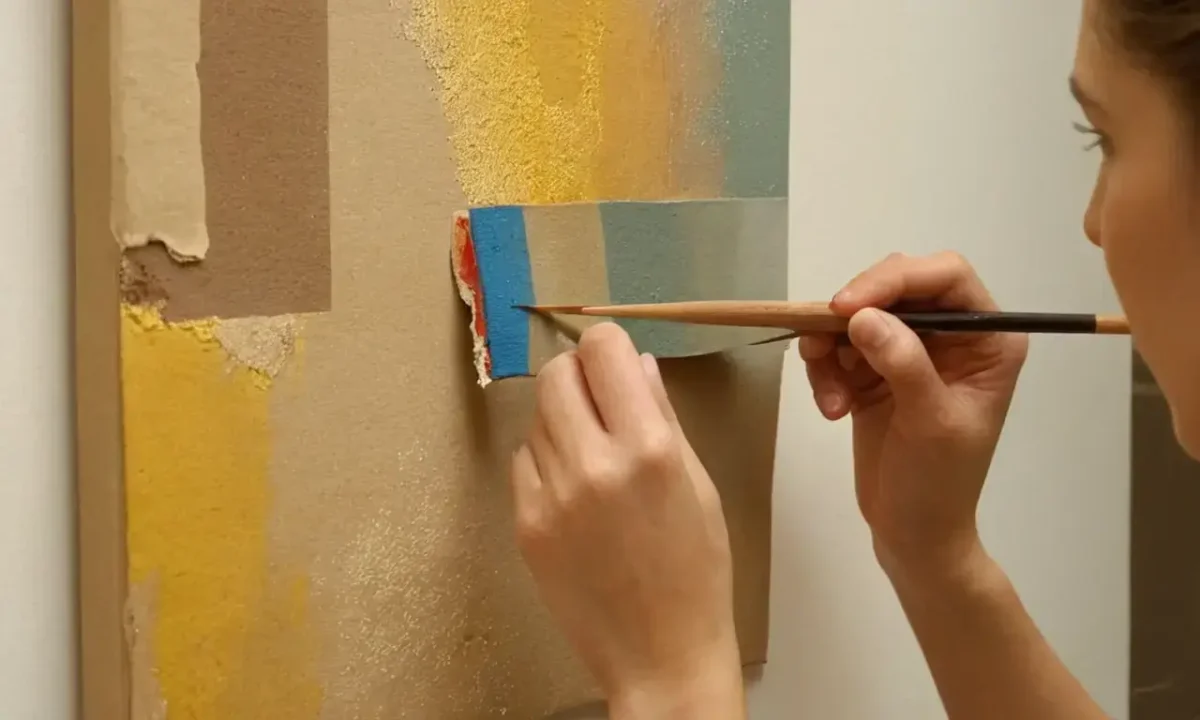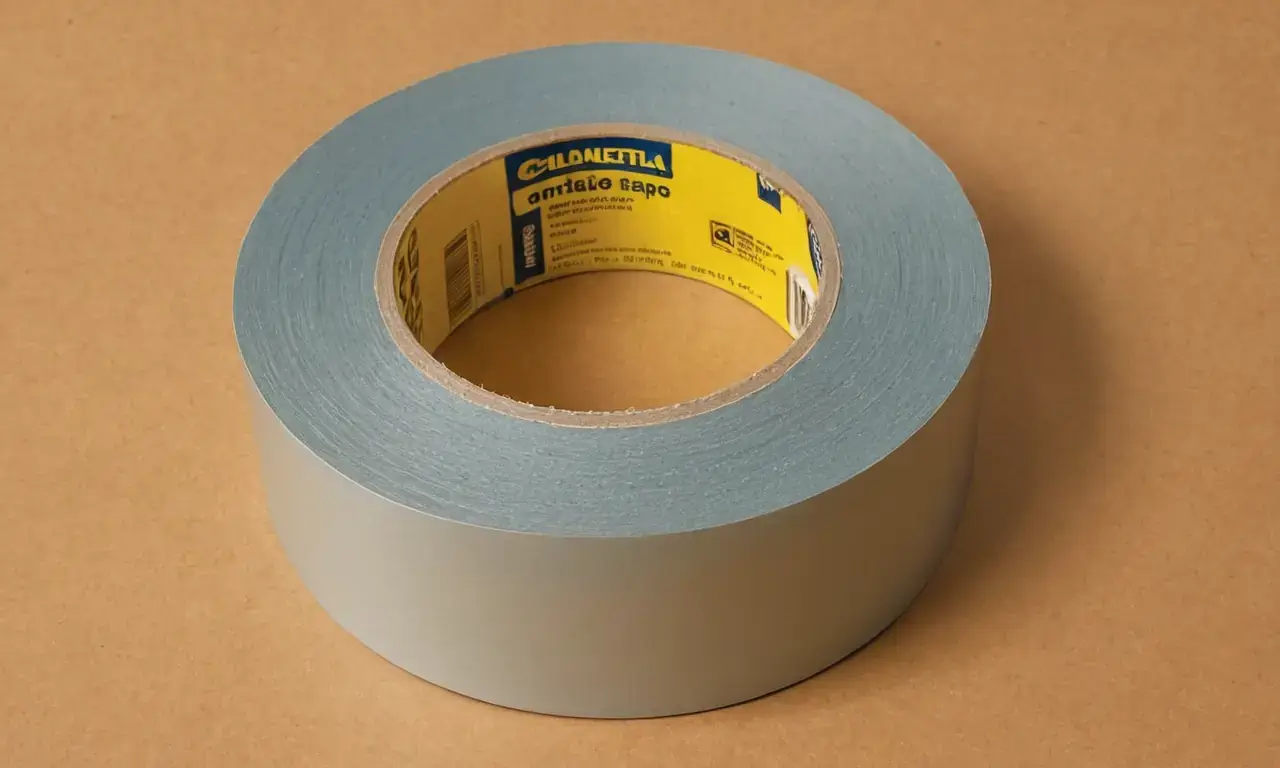
Painter's Tape vs. Masking Tape: A Guide to Choosing the Right One

Painter's tape and masking tape are essential tools in any artist or DIY enthusiast's arsenal, offering a way to create clean lines and protect surfaces during painting projects. While they may seem similar at first glance, these tapes have distinct characteristics that make them suitable for different applications. Understanding the differences between painter's tape and masking tape is crucial for achieving desired results and ensuring smooth paint application. This article delves into the unique properties of each tape, exploring their adhesive strengths, intended uses, and cleaning considerations to help you choose the right one for your next project.
The primary objective of this article is to provide a comprehensive guide that clarifies the distinctions between painter's tape and masking tape. We will delve into the specific characteristics of each type, including their adhesive properties, applications in various projects, and the ease with which they can be removed from surfaces. By understanding these nuances, readers can make informed decisions about which tape is best suited for their needs, ultimately leading to more successful painting endeavors.
What is Painter's Tape?
Painter's tape is a specialized adhesive tape designed for precise paint application. It features a strong, flexible backing that allows it to adhere firmly to various surfaces without lifting or tearing the painted area. This characteristic is crucial when creating clean lines and edges on walls, trim, and other surfaces where a smooth finish is desired.
Painter's tape typically comes in rolls with varying widths, allowing for flexibility in covering different areas. Its adhesive properties are designed to withstand prolonged exposure to moisture and temperature fluctuations, making it suitable for both indoor and outdoor painting projects. The tape's ability to resist paint bleed-through ensures that the painted surface remains clean and free of unwanted color bleeding.
Key Features of Painter's Tape
- Strong Adhesion: Painter's tape features a strong adhesive backing that adheres firmly to various surfaces, including drywall, wood, and metal. This allows for precise lines and edges without lifting or tearing the paint.
- Flexibility: The flexible nature of painter's tape makes it easy to apply around curves and contours, ensuring clean lines even in complex shapes.
- Paint Resistance: Painter's tape is designed to withstand the pressure of painting, preventing paint from bleeding through the tape line. This ensures a smooth finish on the painted surface.
- Durability: The tape can withstand various weather conditions, making it suitable for both indoor and outdoor projects.
Applications of Painter's Tape
Painter's tape finds its use in numerous painting projects, including:
- Interior Painting: Creating clean lines between walls, trim, and moldings during interior painting.
- Exterior Painting: Protecting siding, windows, and other exterior surfaces from paint splatters during exterior painting.
- Furniture Refinishing: Applying masking tape to furniture before refinishing to protect the surrounding areas.
- DIY Projects: Creating clean lines and edges in various DIY projects like woodworking or home improvement tasks.
Choosing Painter's Tape for Your Project
When selecting painter's tape, consider factors such as surface type, paint type, and desired finish. For example, if painting a smooth wall with latex paint, using painter's tape is essential to prevent bleed-through. Conversely, when working on textured surfaces like brick or stucco, it may be necessary to use a combination of painter's tape and masking tape for optimal results.
What is Masking Tape?
Masking tape is another type of adhesive tape used for various purposes, including protecting surfaces during painting projects. It features a strong adhesive that can hold its shape while being applied to surfaces, making it ideal for creating clean lines and edges. However, unlike painter's tape, masking tape is designed for temporary use and removal without leaving behind residue.
Key Features of Masking Tape
- Strong Adhesion: While not as strong as painter's tape, masking tape still offers a good hold on most surfaces.
- Flexibility: It can be easily bent and shaped around curves and contours, making it suitable for intricate designs.
- Removable Adhesive: The adhesive used in masking tape is designed to be removed without leaving behind sticky residue. This makes it ideal for projects where clean removal is crucial.
Uses of Masking Tape
Masking tape finds its use in various applications, including:
- Painting Projects: Protecting surfaces from paint splatters during painting tasks.
- Crafts and DIY: Creating decorative borders or masking areas for crafts and DIY projects.
- Home Repairs: Covering moldings and other areas during home repairs to prevent paint from getting on them.
- Temporary Labeling: Marking boxes, containers, or other items for temporary labeling purposes.
Choosing Masking Tape for Your Project
When selecting masking tape, consider the surface you're working with and the desired level of adhesion. For surfaces that require a strong hold, such as drywall or wood, using painter's tape is recommended. However, if you need to protect surfaces from paint splatters without needing a clean removal later on, masking tape can be an excellent choice.
Key Differences Between Painter's Tape and Masking Tape
While both tapes serve similar purposes in painting projects, they have distinct differences that make them suitable for different applications. The primary difference lies in their adhesive strength and intended use:
| Feature | Painter's Tape | Masking Tape |
|---|---|---|
| Adhesive Strength | Strong, designed to withstand paint pressure | Moderate, good for temporary protection |
| Intended Use | Precise lines and edges during painting | Protecting surfaces from paint splatters |
| Removal | Requires careful removal without residue | Easy removal with minimal residue |
| Cost | More expensive per roll | Less expensive per roll |
Adhesive Strength and Paint Bleed

Painter's tape is designed to withstand the pressure of painting, preventing paint from bleeding through the tape line. This characteristic is crucial for achieving clean lines and edges on walls, trim, and other surfaces where a smooth finish is desired. The strong adhesive backing ensures that the tape stays firmly in place even when exposed to moisture or temperature fluctuations.
Masking tape, while still offering good adhesion, is not designed for prolonged paint exposure. Its moderate adhesive strength allows it to be removed without leaving behind sticky residue. However, this can also lead to paint bleed-through if applied too loosely or over areas with high pressure during painting.
Use Cases for Each Type
Painter's tape finds its use in various painting projects where precise lines and edges are crucial. It is often used to create clean lines between walls, trim, and moldings during interior painting. Painter's tape also helps protect surfaces from paint splatters during exterior painting projects.
Masking tape, on the other hand, is primarily used for protecting surfaces from paint splatters during painting tasks. It can be applied to various surfaces like wood, metal, or drywall before applying paint. This prevents paint from getting on unintended areas and ensures a clean finish.
Choosing the Right Tape for Your Project
When choosing between painter's tape and masking tape, consider the specific needs of your project. If you need to create precise lines and edges during painting, then painter's tape is the better choice. However, if you just need to protect surfaces from paint splatters without needing a clean removal later on, then masking tape will suffice.
Conclusion
Both painter's tape and masking tape are essential tools for any DIY enthusiast or professional painter. Understanding their differences in adhesive strength, intended use, and removal process can help you choose the right tape for your next project. By selecting the appropriate tape, you can ensure a clean finish and achieve the desired aesthetic results in your painting endeavors.
Leave a Reply





Related Links